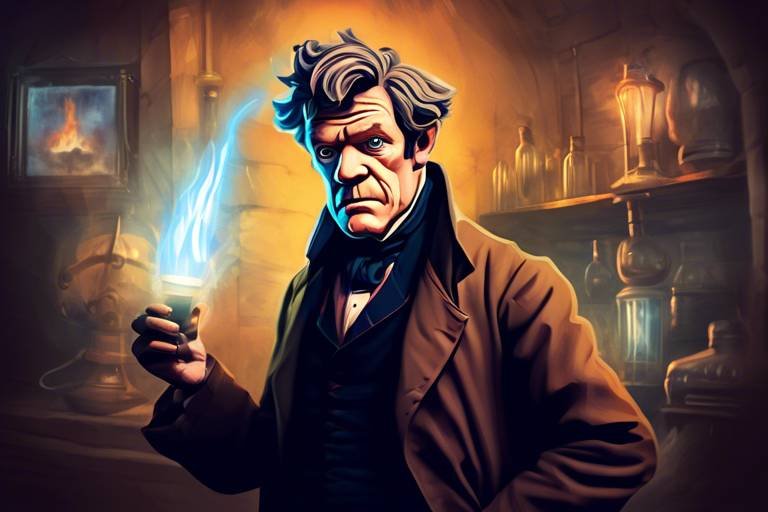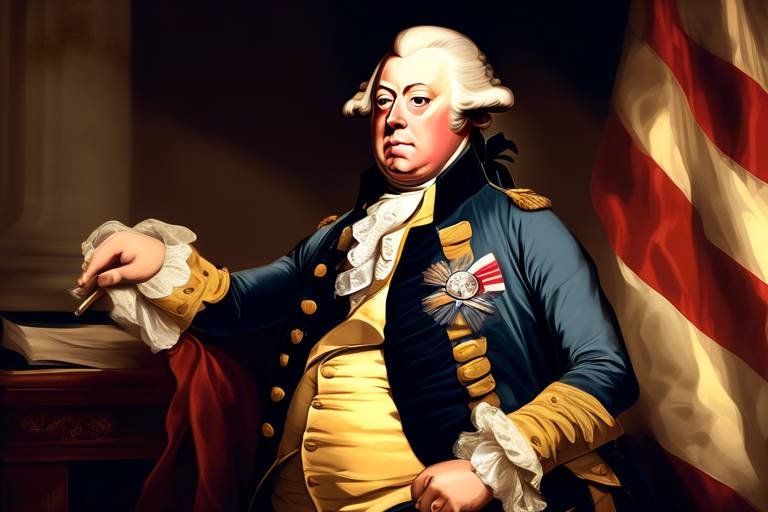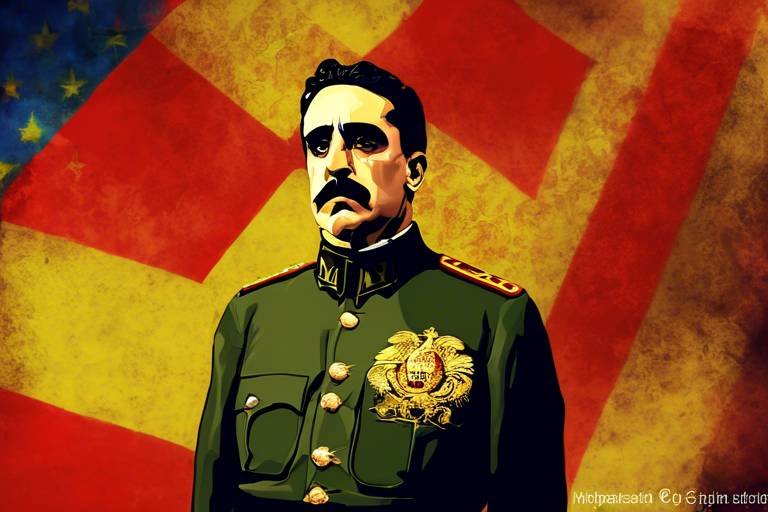Charles I: The King Who Lost His Head
Charles I, the ill-fated monarch of England, is remembered as the king who tragically lost his head in a pivotal moment of British history. His reign was marked by tumultuous conflicts, political upheaval, and ultimately, regicide. Charles I's story is a cautionary tale of power, pride, and the consequences of clashing with Parliament.
From his early years to his ascension to the throne in 1625, Charles I faced a series of challenges that would shape his reign. Raised under the guidance of his father, James I, he inherited a kingdom grappling with religious and political tensions. As he stepped into the role of king, he was met with a nation divided and a Parliament increasingly at odds with his vision.
The strained relations between Charles I and Parliament would define much of his rule. Disputes over taxation, religious practices, and governance created a rift that widened over time. The Petition of Right in 1628 served as a formal declaration of grievances against the king's actions, setting the stage for further confrontations between the crown and the legislative body.
Opting for personal rule and implementing controversial religious policies, Charles I sought to assert his authority without the constraints of Parliament. His attempts to impose Anglican practices in Scotland and England met fierce resistance, fueling the flames of dissent that would eventually erupt into civil war.
The outbreak of the English Civil War in 1642 was a culmination of years of mounting tensions and unresolved conflicts. Royalists loyal to Charles I clashed with parliamentarians in a brutal conflict that would reshape the political landscape of Britain. The trial of Charles I for high treason marked a shocking turn of events, as the once-untouchable monarch stood trial before his subjects.
Refusing to acknowledge the authority of the court, Charles I met his fate on the executioner's block, a moment that reverberated through history. The regicide of an anointed king sent shockwaves through the monarchy, paving the way for a new era of parliamentary power and influence.
Assessing the legacy of Charles I reveals a complex tapestry of consequences. His reign and ultimate demise left an indelible mark on British society, shaping the future of the monarchy and the balance of power between crown and parliament. The echoes of his rule continue to resonate in the annals of history, a stark reminder of the perils of unchecked authority and the price of defiance.

Early Life and Ascension to the Throne
Charles I, born on November 19, 1600, was the second son of James VI of Scotland and Anne of Denmark. His early life was marked by a strict upbringing under his father's watchful eye, who instilled in him the belief in the divine right of kings. Upon the death of his brother Henry in 1612, Charles became the heir to the throne. His ascension to the English throne in 1625 followed the death of his father, James I, marking the beginning of his tumultuous reign.
As Charles I assumed power, he faced immediate challenges, both politically and financially. The new king inherited a strained relationship with Parliament, which was already embroiled in conflicts over issues of taxation and religious freedom. Charles's attempts to assert his authority and implement his policies often clashed with the interests of Parliament, setting the stage for the turbulent years ahead.
Despite his initial popularity, Charles I's reign soon became mired in controversy as his absolutist tendencies clashed with the growing demands for parliamentary sovereignty. The king's attempts to govern without the consent of Parliament led to a series of conflicts that would ultimately plunge England into a bloody civil war.
Charles I's religious policies further exacerbated tensions within the realm. His attempts to impose Anglican practices in Scotland, a predominantly Presbyterian nation, led to widespread discontent and rebellion. The king's insistence on centralized control and uniformity in religious matters alienated many of his subjects, fueling the flames of dissent.
By the time the English Civil War erupted in 1642, Charles I had become a polarizing figure, with supporters and detractors deeply divided over his rule. The conflict between the royalists and parliamentarians would drag on for years, culminating in the trial and execution of the king in 1649.
Charles I's refusal to compromise with his opponents and his steadfast belief in his divine right to rule ultimately sealed his fate. The regicide of an anointed king sent shockwaves throughout Europe and forever altered the course of British history, ushering in a new era of parliamentary supremacy.

Strained Relations with Parliament
During his reign, Charles I faced significant challenges in his relationship with Parliament, which ultimately led to strained relations and a breakdown in trust between the two entities. The tensions between the king and Parliament were primarily fueled by disagreements over key issues such as taxation, religion, and governance. Charles I's attempts to assert his authority and push forward his policies often clashed with the interests and prerogatives of Parliament, creating a contentious atmosphere in the political landscape of England.
One of the pivotal moments in the deteriorating relationship between Charles I and Parliament was the Petition of Right in 1628. This document served as a formal statement of grievances against the king's actions, outlining the limits of his power and asserting the rights of Parliament in matters of governance. The Petition of Right highlighted the growing discontent and opposition to Charles I's policies, setting the stage for further conflicts and confrontations between the monarch and the legislative body.
As tensions continued to escalate, Charles I resorted to ruling without Parliament for an extended period, a period known as the Personal Rule. During this time, the king implemented controversial religious policies that aimed to enforce Anglican practices in both Scotland and England, further alienating many members of Parliament and the broader population. Charles I's unilateral actions and disregard for parliamentary input deepened the divide between the crown and the legislative branch, exacerbating the already strained relations between the two sides.

The Petition of Right
The Petition of Right was a pivotal document in English history, representing a significant moment in the ongoing power struggle between Charles I and Parliament. It was presented to the king in 1628, outlining the grievances of Parliament against the monarch's actions that were deemed unconstitutional and oppressive. The petition aimed to reaffirm traditional English liberties and limit the king's authority in areas such as taxation, imprisonment without cause, and the quartering of soldiers in private homes.
One of the key provisions of the Petition of Right was the prohibition of taxation without the consent of Parliament, a fundamental principle that underscored the importance of parliamentary approval for financial matters. This demand reflected the growing discontent among parliamentarians over Charles I's arbitrary taxation practices and his disregard for established legal procedures.
In addition to addressing fiscal concerns, the petition sought to curb the king's use of martial law and arbitrary imprisonment, emphasizing the need for due process and the protection of individual rights. By highlighting these issues, Parliament aimed to check the monarch's ability to infringe upon the liberties of English subjects without legal justification.
Despite initially accepting the Petition of Right to secure much-needed funds from Parliament, Charles I later attempted to circumvent its provisions and continue his controversial policies. This disregard for the terms of the petition further strained relations between the king and Parliament, setting the stage for escalating tensions that would eventually erupt into open conflict during the English Civil War.

Personal Rule and Religious Policies
During his reign, Charles I made a controversial decision to rule without Parliament for over a decade, a period known as his "Personal Rule." This unprecedented move allowed Charles to govern based on his own authority, bypassing the need for parliamentary approval. The king's personal rule was marked by his attempts to impose Anglican religious practices in both Scotland and England, which faced strong opposition from those who held different religious beliefs.
One of the key aspects of Charles I's religious policies was his introduction of a new Book of Common Prayer in Scotland, which sparked outrage and resistance among the Scottish population. This move ultimately led to the Bishops' Wars, a series of conflicts between the Scottish Covenanters and the royal forces, further deepening the divide between the king and his subjects.
Additionally, Charles I's religious policies in England, particularly his attempts to enforce conformity to Anglicanism, alienated many Puritans and other dissenting religious groups. The king's insistence on centralizing religious authority and imposing uniformity in worship created significant unrest and dissent among the populace, contributing to the growing tensions that would eventually erupt into civil war.

The Outbreak of the English Civil War
As tensions simmered and discontent brewed between the royalists and parliamentarians, the stage was set for a dramatic showdown that would shake the foundations of England. The seeds of conflict were sown in the differing visions of power held by Charles I and Parliament, with each side unwilling to yield.
Charles I's attempts to assert his authority and impose his will on matters of religion and governance clashed with Parliament's desire for greater influence and control over the affairs of the nation. The struggle for supremacy reached a boiling point, with neither side willing to back down.
Amidst mounting pressure and polarized loyalties, the spark that ignited the powder keg came in 1642 when Charles I raised his royal standard in Nottingham, officially declaring war on Parliament. The die was cast, and England was plunged into a brutal and protracted conflict that would pit brother against brother and father against son.
The English Civil War was not merely a clash of arms but a clash of ideologies, a struggle for the soul of the nation. Royalists fought for the divine right of kings, while parliamentarians fought for the rights of the people and the supremacy of law over arbitrary rule. The battlefield became a crucible where the fate of England would be decided.
With battles raging across the countryside and cities besieged, the English Civil War exacted a heavy toll on the population, tearing families apart and leaving scars that would endure for generations. The conflict would test the resolve of both sides, pushing them to the brink of exhaustion and desperation.
Ultimately, the outbreak of the English Civil War was a cataclysmic event that shattered the illusion of unity and exposed the deep divisions within English society. It was a clash that would reshape the political landscape, redefine the balance of power, and pave the way for a new chapter in English history.

The Trial and Execution of Charles I
As Charles I's conflicts with Parliament reached a boiling point, the stage was set for a dramatic and unprecedented event in British history - his trial and execution. The trial of Charles I for high treason was a momentous occasion, symbolizing the clash between royal authority and parliamentary power. Despite the gravity of the charges against him, Charles I refused to recognize the authority of the court, maintaining his divine right to rule as king.
The trial itself was a highly controversial and contentious process, with the king's defense centered around his belief in the absolute sovereignty of the monarch. However, the outcome was inevitable, as the court found Charles I guilty of treason against his own subjects. This verdict paved the way for a decision that would send shockwaves through the country and beyond.
On a cold January day in 1649, outside the Banqueting House in Whitehall, London, Charles I met his fate at the executioner's block. The execution of an anointed king was a seismic event, shattering centuries-old traditions and beliefs about the sacrosanct nature of royal authority. The sword fell, and with it, the head of Charles I, marking a symbolic end to his tumultuous reign and the beginning of a new chapter in British history.
The regicide of Charles I sent shockwaves across Europe, with many monarchs and rulers expressing horror and disbelief at the unprecedented act. The repercussions of his execution were far-reaching, sparking debates about the limits of royal power, the role of Parliament, and the rights of the people. The death of Charles I reverberated throughout the British Isles, leaving a lasting impact on the monarchy and the political landscape of the nation.

Legacy and Historical Significance
Charles I left behind a complex legacy that continues to shape British history to this day. His reign and ultimate execution marked a pivotal moment in the power dynamics between the monarchy and Parliament. The regicide of Charles I set a precedent that no monarch was above the law and established the principle of constitutional monarchy in England.
One of the key outcomes of Charles I's reign was the significant increase in parliamentary power. The English Civil War and the subsequent establishment of the Commonwealth under Oliver Cromwell highlighted the importance of a system of checks and balances in governance. The monarchy's authority was forever diminished, paving the way for a more balanced distribution of power between the crown and Parliament.
Furthermore, Charles I's religious policies and his attempts to impose Anglicanism on Scotland and England contributed to the deepening divisions within British society. The religious strife during his reign fueled the flames of dissent and played a crucial role in the outbreak of the English Civil War. The conflict between royalists and parliamentarians was not just about political power but also about differing religious beliefs and practices.
Charles I's execution in 1649 sent shockwaves across Europe, as the act of regicide was virtually unheard of at the time. The event reverberated through the corridors of power, signaling a new era where the monarch's authority was subject to the will of the people, as represented by Parliament. The repercussions of Charles I's execution were felt far beyond the borders of England, influencing debates on sovereignty and governance throughout the continent.
In conclusion, Charles I's legacy is a complex tapestry of political intrigue, religious conflict, and constitutional change. His reign and subsequent execution reshaped the foundations of British governance and set the stage for the development of modern parliamentary democracy. The events surrounding Charles I's rule continue to be studied and debated by historians, offering valuable insights into the evolution of political power and the delicate balance between the crown and the legislature.
Frequently Asked Questions
- What were the key events that led to the English Civil War?
The English Civil War was primarily fueled by the strained relations between Charles I and Parliament. Tensions escalated over issues such as taxation, religion, and governance, ultimately leading to armed conflict in 1642.
- Why was Charles I executed?
Charles I was executed for high treason following his refusal to recognize the authority of the court during his trial. His execution marked a significant turning point in British history, as it was the first time an anointed king was put to death.
- What was the legacy of Charles I and the English Civil War?
Charles I's reign and execution had a profound impact on the monarchy and the balance of power between the crown and Parliament. The English Civil War also paved the way for the rise of parliamentary authority and had long-term consequences for British society.



















